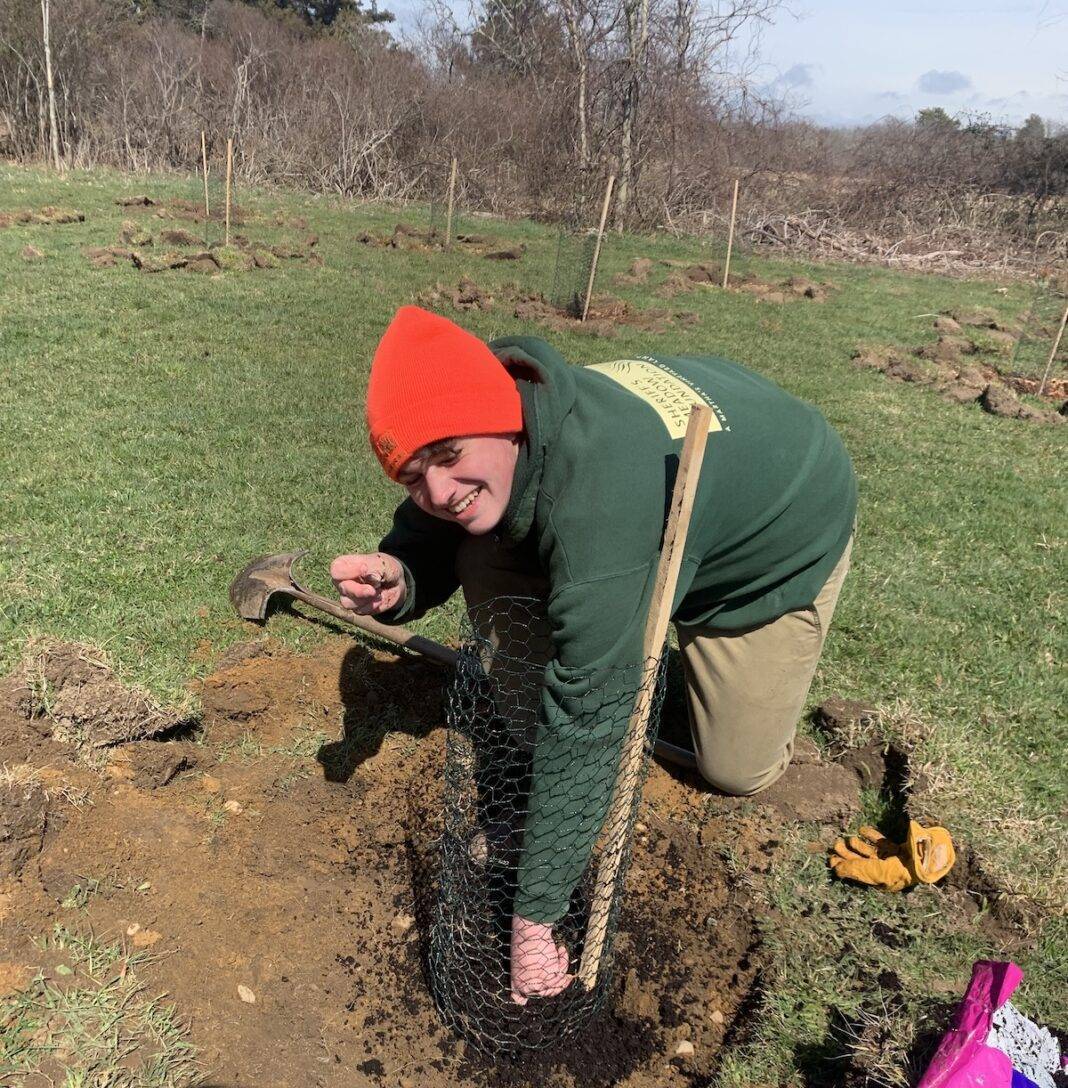“It’s like planting KitKats,” said Kendra Collins of the American Chestnut Foundation, speaking at the March 22, 2022 annual conference of the New England Society of American Foresters, in South Portland, Maine. American chestnuts are delectable. Ms. Collins was describing the care that must be taken to protect the planted nuts from every hungry rabbit, deer, and squirrel.
I had been warned. On my drive back to the Island from this conference, I puzzled over how best to protect the nuts from the countless cottontail rabbits that scurry over the plains of Quansoo. I arrived home to find, in my refrigerator, what I had spent months awaiting: a box of chestnuts.
These were not just any chestnuts, though. They were American chestnuts, Castanaea dentata, and they had been sent to me by the American Chestnut Foundation. The American Chestnut Foundation sent them to Sheriff’s Meadow Foundation because Sheriff’s Meadow has committed to establishing a “germplasm conservation orchard” at Quansoo Farm.
Once the most important timber tree of eastern North America, the American chestnut now rarely grows taller than a shrub. Throughout its range, the American chestnut suffers from the chestnut blight. A fungal pathogen, the chestnut blight lives in the soil, and causes cankers on the stems of American chestnuts. These cankers spread around the stem, and ultimately girdle the tree, killing it. Once killed, an American chestnut will resprout from the stump, but the tree finds itself locked into a cycle of sprouting and dying, sprouting and dying.
However, there are a few mature American chestnuts that do appear to display a natural resistance to the blight. These trees have been mapped and identified by the American Chestnut Foundation. Foundation volunteers go out in the fall to collect the nuts from these resistant trees. The Foundation also seeks landowners with a long-term outlook and an ability to care for land to create and tend an orchard of these naturally blight-resistant trees, known as a germplasm conservation orchard. Knowing that Sheriff’s Meadow Foundation could meet these criteria, and knowing that Quansoo had the acidic soil and open sun that chestnuts need, I signed us up.
In the box were three bags containing a dozen nuts each. Each bag was labeled to indicate the name and location of the mother tree. My nuts came from trees in Fall River, Canton, and Northborough. Instructions provided to me recommended that the trees be planted at 10-foot spacing, and that rows from different trees be separated by a gap of 20 feet.
The Foundation also seeks landowners with a long-term outlook and an ability to care for land to create and tend an orchard of these naturally blight-resistant trees, known as a germplasm conservation orchard. Knowing that Sheriff’s Meadow Foundation could meet these criteria, and knowing that Quansoo had the acidic soil and open sun that chestnuts need, I signed us up.
With a compass, stake, and a tape measure, I set forth on a beautiful Saturday morning to lay out the orchard. I laid out the orchard with two rows of six trees for each group of trees, with a 20-foot gap between the groups of trees. With a mallet, I tapped a stake into the ground at each planting location. Then came the hard work of breaking the sod and preparing for planting.
For this, I enlisted the help of my children, Isabel, Ingrid, and Huck. Around each stake, we delineated a circle three feet in diameter. Within this circle, we used a hoe and a shovel and a pick-mattock to remove the sod and prepare a hole.
Next, I needed to create a shelter to protect the delectable nut from rabbits. Liz Loucks and Noah Froh from the Sheriff’s Meadow Foundation staff joined in to help create the shelters. For this task, we cut a section of chicken wire fencing, rolled it into a cylinder, and stapled this cylinder to a hardwood stake. We buried the bottom foot of this shelter in the planting hole, and then filled in the rest of the hole with earth, with some potting soil in the center.
With the shelter in place, it was time to plant the nuts. To begin, I reached into the Fall River bag, and plucked out a beautiful brown chestnut. The root had already begun to grow. I planted the nut about an inch deep, covered the top with soil, and watered it with a watering can. Liz, Noah, and Huck helped to plant all the trees. When finished, we had planted 34 trees total, as the bags contained 12 nuts from Fall River, 12 from Canton, and 10 from Northborough.
Now, I wait. I check each day, waiting to see these young trees emerge from the soil. If I have done the planting correctly, I hope that, by Arbor Day, we will have successfully established the first American Chestnut Germplasm Conservation Orchard on Martha’s Vineyard.
What You Can Do:
Find out more about the American Chestnut Foundation

